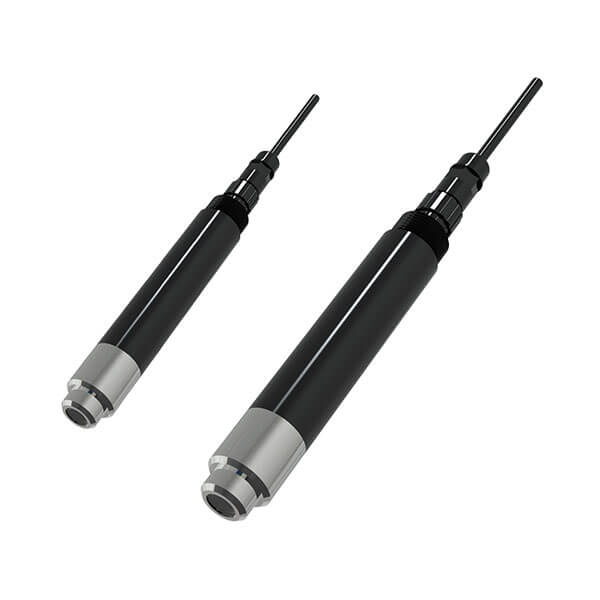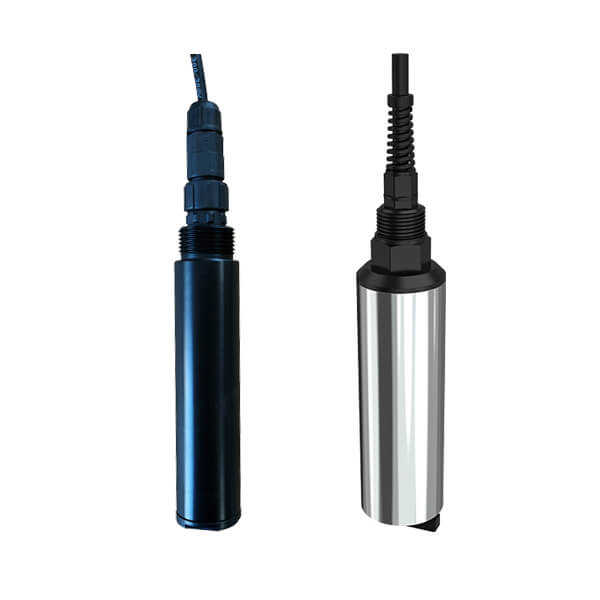Table of Contents What is conductivity in water? Conductivity in water is the ability of water to conduct electricity. It is primarily related to the
Integrated Conductivity Sensor
In order to meet the needs of customers who want to use their own software to obtain water quality data, we have developed this integrated conductivity sensor. It uses RS485 signal output, which is convenient for customers to access their own software. It can not only monitor the conductivity data in the solution, but also provide TDS and salinity values at the same time. It is a powerful and reliable solution conductivity sensor.
- Model: RS-EC-N01-3-EX
- MOQ: 1 PCS
- Delivery date: within 24 hours
- Price:$62
Integrated Conductivity Sensor

EC Sensor Features
RS-EC-N01-3-EX integrated conductivity sensor has an automatic temperature compensation function, and the measurement data is more accurate and reliable. It adopts an integrated design, and the overall structure has no extra accessories, which is simple to install and easy to use. The measurement data can be read through the customer’s own software or connected to our handheld water quality analyzer. The shell is made of waterproof material and the protection level can reach IP68. It is widely used in aquaculture, sewage treatment, environmental protection, pharmaceuticals and tap water purification.
The integrated EC sensor has salinity and TDS conversion functions, and can monitor conductivity, temperature, TDS and salinity at the same time. The ModBus communication address can be set and the baud rate can be modified. It adopts a wide voltage power supply, DC 10~30V is acceptable.
EC Sensor Datasheets
| Power supply | DC 10~30V | |
| Power consumption | 0.4W | |
| Communication interface | Standard ModBus-RTU protocol; Communication baud rate: default 4800 (1200, 2400, 4800, 9600, 19200, 38400, 57600, 115200 can be set) | |
| EC measure range | K=1 | 1~2000μS/cm |
| K=10 | 10~20000μS/cm | |
| EC resolution | K=1 | 0.1μS/cm |
| k=10 | 1μS/cm | |
| EC measure error | ±1%FS | |
| Temperature range | -5~+80℃ | |
| Temperature resolution | 0.1℃ | |
| Temperature measure error | ±0.5℃ | |
| Temp compensation range | -5~+80℃ (default is 25℃) | |
| Temp compensation coefficient | default 0.02 | |
| Salinity measure range | K=1 | 0~1000ppm |
| K=10 | 0~11476ppm | |
| TDS measure range | K=1 | 0~1100ppm |
| K=10 | 0~13400ppm | |
| Temperature resistance | -20~+80℃ | |
| Protect class | IP68 | |
| Pressure resistance | 0.6MPa | |
| Wire length | Default 5m (other lengths can be customized) | |

Use and Maintenance
Maintenance
The integrated conductivity sensor generally do not require daily maintenance. In the event of an obvious fault, please do not open and repair it yourself, and contact us as soon as possible!
Stain removal
Organic stains on the electrode can be cleaned with warm water containing detergent, or with alcohol. Calcium and magnesium precipitates are best cleaned with 10% citric acid.
Cleaning
The electrode plate can only be cleaned chemically or by shaking in water. Wiping the electrode plate will damage the coating (platinum black) on the surface.
Storage
If the conductivity electrode is not used for a long time, please store it in a dry place. Before use, it must be placed in distilled water for several hours to activate the electrode. Frequently used electrodes can be stored in distilled water.
Calibration
It should be calibrated before each use. It is recommended to calibrate it every 3 months for long-term use. The calibration frequency should be adjusted appropriately according to different usage conditions (it is necessary to consider the degree of dirtiness of the application, the deposition of chemical substances, etc.).
EC Sensor FAQs
Our integrated EC sensors have two models to choose from:
When the electrode constant K=1, the model is: RS-EC-N01-3-01-EX
When the electrode constant K=10, the model is: RS-EC-N01-3-10-EX
1. First open the configuration software. Select the corresponding serial port number, select the correct device address (the default address is 1) and baud rate (the default baud rate is 4800), then open the serial port, find the EC tab, and check the automatic option.
2. Select the corresponding conductivity resolution according to the range of the purchased device. If the range of the purchased electrode constant k=1 is 1~2000μs/cm, select a resolution of 0.1. If the range of the purchased electrode constant k=10 is 10~20000μs/cm, select a resolution of 1.0. The default resolution is 1.0.
After selecting the resolution, click Query to display the current conductivity and temperature. Check Automatic to refresh in real time.
3. The temperature compensation coefficient can be modified according to the temperature coefficient of the measured solution. The default is 0.02.
During calibration, place the electrode in a standard solution with a known conductivity value and shake the electrode to speed up the response. Then let it stand for a while. After the conductivity value stabilizes, write the conductivity of this solution into the conductivity solution calibration and click Calibrate to complete the calibration.
1. Immersion installation: The lead wire of the device is passed through the waterproof pipe, and the 3/4 thread on the top of the device is connected to the 3/4 thread of the waterproof pipe with raw tape. Ensure that water does not enter the top of the device and the device line.
2. Pipeline installation: Connect the 3/4 thread of the device to the pipeline.
The default output line of the conductivity electrode is a four-core bare wire: brown represents the positive pole of the power supply (7~30VDC), black represents the negative pole of the power supply, yellow is the communication line representing 485-A, and blue is also the communication line representing 485-B
- Integrated EC sensor * 1
- 5m (or customized length) cable * 1
- Certificate of conformity * 1
- Warranty card * 1
Conductivity, temperature, TDS and salinity.
Please email us for manual.
Our company has a wide range of water quality sensors, covering pH, conductivity, dissolved oxygen, suspended solids, turbidity, ORP, COD, residual chlorine, chlorophyll, blue-green algae and other ions in solution.
Renke is a leading environmental monitoring equipment manufacturer in China, with more than 15 years of R&D and production experience. We can provide you with efficient water quality monitoring solutions and solve water quality sensors installation and use problems. We also provide a free monitoring platform for your long-term use.
Related Blogs
Table of Contents We need to understand what is turbidity, before learning the turbidity sensor. Turbidity is a measure of water quality that reflects the
What is dissolved oxygen? Dissolved oxygen (DO) refers to molecular oxygen dissolved in water. The unit is mg/L, which means how many milligrams oxygen in
Long-term rainfall and melting snow have raised water levels and flooded city roads, causing flooding. Frequent and extreme flooding is inevitable and endangers community safety.
Everyone knows that the choice of water quality sensors is very important. In water measurement, the ph sensor is one of the important tools. However, there are
Natural disasters such as floods and heavy rains pose threats to lives and property around the world. Without a proper flood monitoring system, these natural










